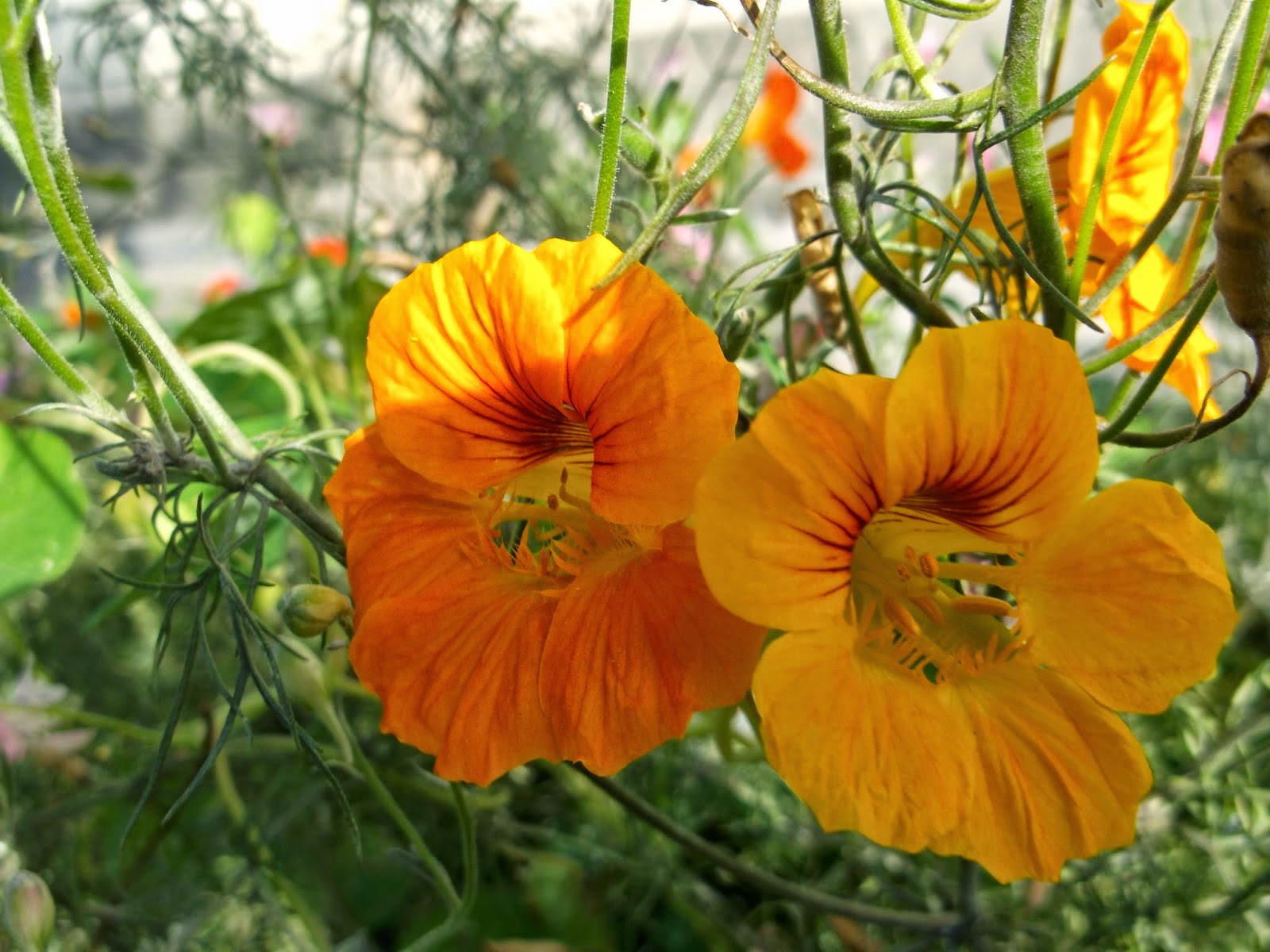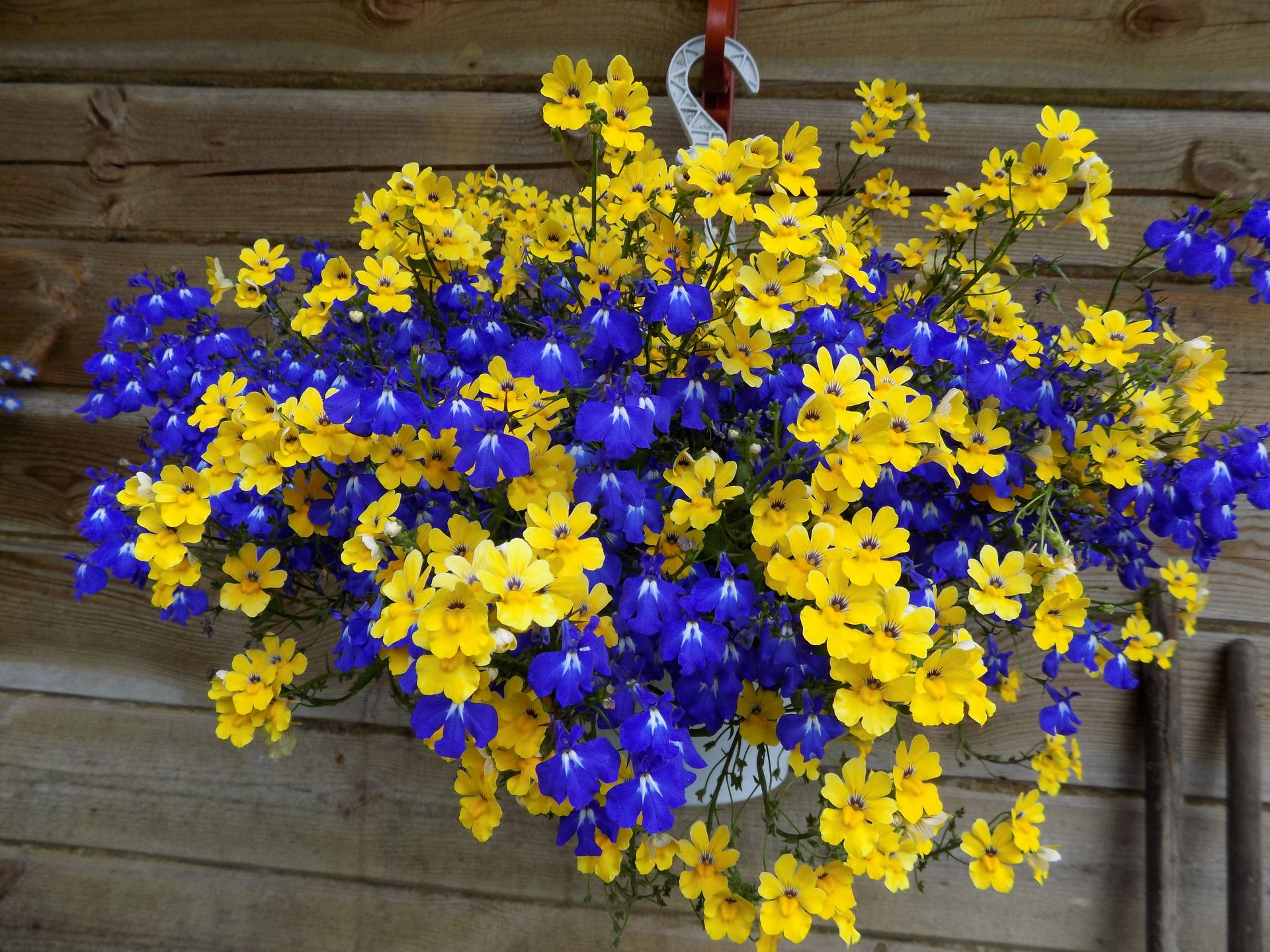If you want to decorate an unsightly fence or walls, a veranda or a gazebo at your summer cottage, then nasturtium will definitely suit you. The plant with a sea of bright flowers and a whole bunch of leaves looks very beautiful and impressive.
The rapid growth of nasturtium and abundant flowering, its unpretentiousness and easy cultivation made the flower popular not only among gardeners. Nasturtium can grow and bloom beautifully at home, decorating a loggia or balcony.
Content
Description and varieties of nasturtium
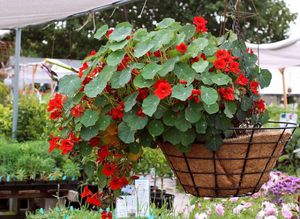 Nasturtium in the form of a liana or shrub is distinguished by a succulent stem, lobed thyroid, palmate or entire leaves and irregularly shaped flowers.
Nasturtium in the form of a liana or shrub is distinguished by a succulent stem, lobed thyroid, palmate or entire leaves and irregularly shaped flowers.
Yellow or red flowers can be terry, semi-double or simple. They consist of a funnel-shaped tube, five or more sepals and petals. The fruit formed after flowering nasturtium consists of three kidney-shaped wrinkled lobes with rounded-kidney-shaped seeds.
A distinctive feature of nasturtium is that its stems and flowers are of interest to cooks and have healing properties.
The tropical beauty grows like a perennial plant in its homeland. But nasturtium does not tolerate subzero temperatures, so it is grown in our gardens as an annual. Five plant species are most popular among florists.
Small nasturtium
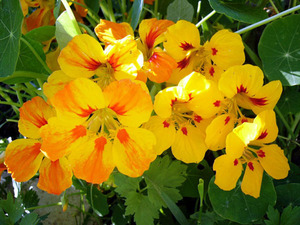 A branchy plant 35 cm high with thin stems, very long petioles and rounded leaves covered with small flowers, the diameter of which is about 3 cm.
A branchy plant 35 cm high with thin stems, very long petioles and rounded leaves covered with small flowers, the diameter of which is about 3 cm.
Yellow flowers with dark spots differ curved cylindrical spurs and velvety petals pointed to the edge. Small nasturtium blooms from June to October. The most common varieties:
- “Black Velvet” is a plant variety with simple flowers that are no more than 6 cm in diameter. Their dark burgundy color can appear almost black.
- "Cherry Rose" is distinguished by double flowers of bright red color.
Cultural nasturtium
This type of plant combines hybrids of nasturtium large and shield-bearing. They vary in height and shape. These can be dwarf varieties that grow only up to 15-20 cm, or tall compact bushes up to 50 cm in height.
Some varieties of cultivated nasturtium are creeping plants, the length of the stems of which can be up to 4 meters. The most popular varieties are:
- "Moonlight" - grows up to two meters in length and blooms with pale yellow flowers.
- "Golden Globe" is a bush in the shape of a ball, the height of which reaches only 25 cm. The plant is covered with light green, large, round leaves, up to 6.5 cm in diameter. The double flowers of this variety have a golden yellow color.
- "Gleming Mahagani" has double red flowers and grows up to 37 cm.
Large nasturtium
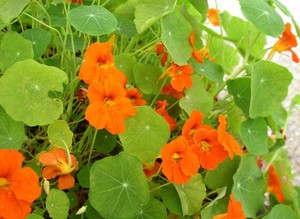 It is a very branchy creeping plant that can grow up to 250 cm.Erect varieties of this type of nasturtium grow up to 70 cm.On fragile branchy stems are asymmetrical, light green, rounded, large leaves.
It is a very branchy creeping plant that can grow up to 250 cm.Erect varieties of this type of nasturtium grow up to 70 cm.On fragile branchy stems are asymmetrical, light green, rounded, large leaves.
The underside of the sheets is gray. It reproduces well by self-sowing and blooms from the beginning of summer to the very frost. Large nasturtium is represented by dozens of varieties, among which bush forms can be distinguished:
- "Ladybug" is distinguished by apricot flowers, the middle of which has burgundy spots.
- "Salmon Baby" is a plant with semi-double flowers.
- Peach Melba is a cream-flowered plant with red specks in the center.
- "King Theodore" is distinguished by bright red flowers.
Shield-bearing nasturtium
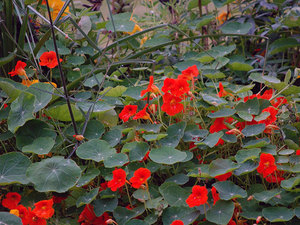 The plant is a creeping semi-shrub, fragile, juicy, dark green shoots of which grow up to four meters. They have dark green thyroid leaves and juicy dark red flowers.
The plant is a creeping semi-shrub, fragile, juicy, dark green shoots of which grow up to four meters. They have dark green thyroid leaves and juicy dark red flowers.
Shield-bearing nasturtium blooms from June to October. The most popular type among gardeners: "Lucifer" - the plant is erect bushes and grows up to 25 cm.
Its large dark green leaves have a dark red hue. On light green shoots, simple red-orange flowers bloom, the diameter of which is 6 cm.
Foreign or Canary nasturtium... A vine growing up to 350 cm is able to quickly braid trellises and arbors. It is distinguished by five - or seven-part medium-sized leaves and bright yellow small flowers.
Canarian nasturtium flowers consist of green spurs and corrugated petals. It blooms from mid-summer until the very frost.
When to plant nasturtium outdoors
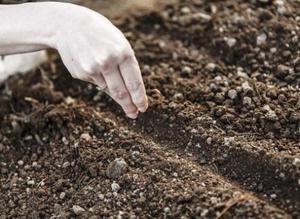 The seeds of the plant remain viable for 4-5 years, so they can be harvested and stored for a long time.
The seeds of the plant remain viable for 4-5 years, so they can be harvested and stored for a long time.
Seeds can be sown outdoors at the end of May... To do this, they are pre-soaked in water with a temperature of 50-60 degrees. Thanks to this, the seed coat softens and they hatch faster.
Next, you need dig up, loosen and fertilize soil. It is recommended to add a little compost, wood ash and superphosphate to the soil.
The distance between the holes should be from 25 to 30 cm.In each hole is sown two or three seeds, which are deepened by 2-3 cm.
The first seedlings should appear in two weeks. Nasturtium sown in open ground will bloom in 40-50 days.
Growing nasturtium from seeds at home
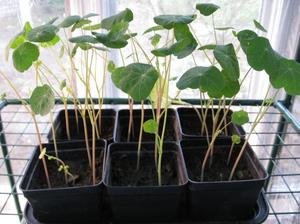 The plant is propagated by seeds in two ways: by sowing seeds directly into open ground; growing seedlings at home.
The plant is propagated by seeds in two ways: by sowing seeds directly into open ground; growing seedlings at home.
To get early flowering bushes, it is recommended to grow nasturtium seedlings from seeds. At home, sowing is done in late March - early April. For this you can take peat or plastic pots with a diameter of 9 cm.
Three seeds are buried in each pot filled with soil. The seedling containers are covered with glass or cellophane and placed in a warm place.
When the first seedlings appear, the glass is removed and the pots are rearranged to a bright place... Seedling care is about watering them on time. It is not recommended to dive for nasturtium, since the delicate root system of the plant does not tolerate transplanting well.
Seedlings are planted in open ground after the frost ends. This must be done carefully, with a large clod of earth. Two to three days before planting, young plants in the afternoon in warm weather taken out into the streetto harden.
Seedlings are planted in holes, the distance between which should be 20-25 cm for compact varieties, and at least 40 cm for climbing plants. Next to tall varieties of nasturtium, supports are installed immediately upon planting.
Growing seedlings is troublesome, but as a result, you can get an early flowering plant, which will quickly grow and decorate the site.
Nasturtium: planting and care in the open field
 It is recommended to plant the plant in well-lit areas protected from the wind, since nasturtium will not bloom well in the shade. The soil for planting must be fertile and lightwell drained and slightly acidic.
It is recommended to plant the plant in well-lit areas protected from the wind, since nasturtium will not bloom well in the shade. The soil for planting must be fertile and lightwell drained and slightly acidic.
It is not recommended to plant nasturtium on organic-rich soils. In this case, the plant will turn magnificently green and bloom little.
Caring for nasturtium consists in regularly watering the plant, weeding and loosening land around the bush. When planting seedlings, the garden bed can be mulched and then you will not have to fight with weeds.
When caring for seedlings, it is very important abundant, regular watering... Blooming nasturtium should be watered as needed. The soil should dry out.
It is recommended to feed the flowers every week. potash-phosphorus fertilizers... When the plant blooms, feeding is stopped.
Dried and faded flowers must be removed in a timely manner. This will help prolong the flowering of the plant. If you need seeds, you can leave a few ovaries to ripen.
As they ripen, the seeds are separated from the peduncle and laid out at room temperature to dry and ripen. Ripe seeds should be whitish in color.
Disease and pest control
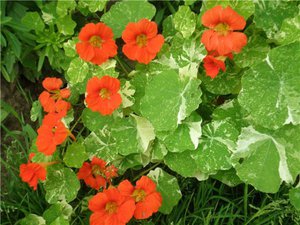 The plant has a specific smell that repels many pests. But sometimes she can be struck by a cabbage whiteness that mines a fly, spider mite, aphid.
The plant has a specific smell that repels many pests. But sometimes she can be struck by a cabbage whiteness that mines a fly, spider mite, aphid.
The fight against these pests is in the treatment of bushes with insecticides systemic action. Sometimes the plant is affected by diseases. Most often it can be:
- gray rot, in which dry brown spots appear on the leaves;
- bacterial wilting, which at the first stage is manifested by the weakening of the lower leaves, and then by the wilting of the entire bush;
- rust and mottled mosaic are diseases in which black and brown spots appear on the leaves.
The fight against these diseases is in plant processing special chemical and bacteriological preparations. The damaged leaves are collected and burned.
In order to prevent the spread of pests on the bushes of nasturtium and not to start the disease, the leaves of the plant should be regularly examined. The affected leaves are immediately removed, and the bush for preventive purposes sprayed with alcohol solution with liquid soap.
Grown from seeds and planted in open ground, nasturtium, with proper care, will delight you with its beautiful flowering and shock of leaves until the frost.
Its low-growing varieties can be planted along paths or used as a curb plant. Fences, building walls, balconies and terraces are decorated with tall bushes.
